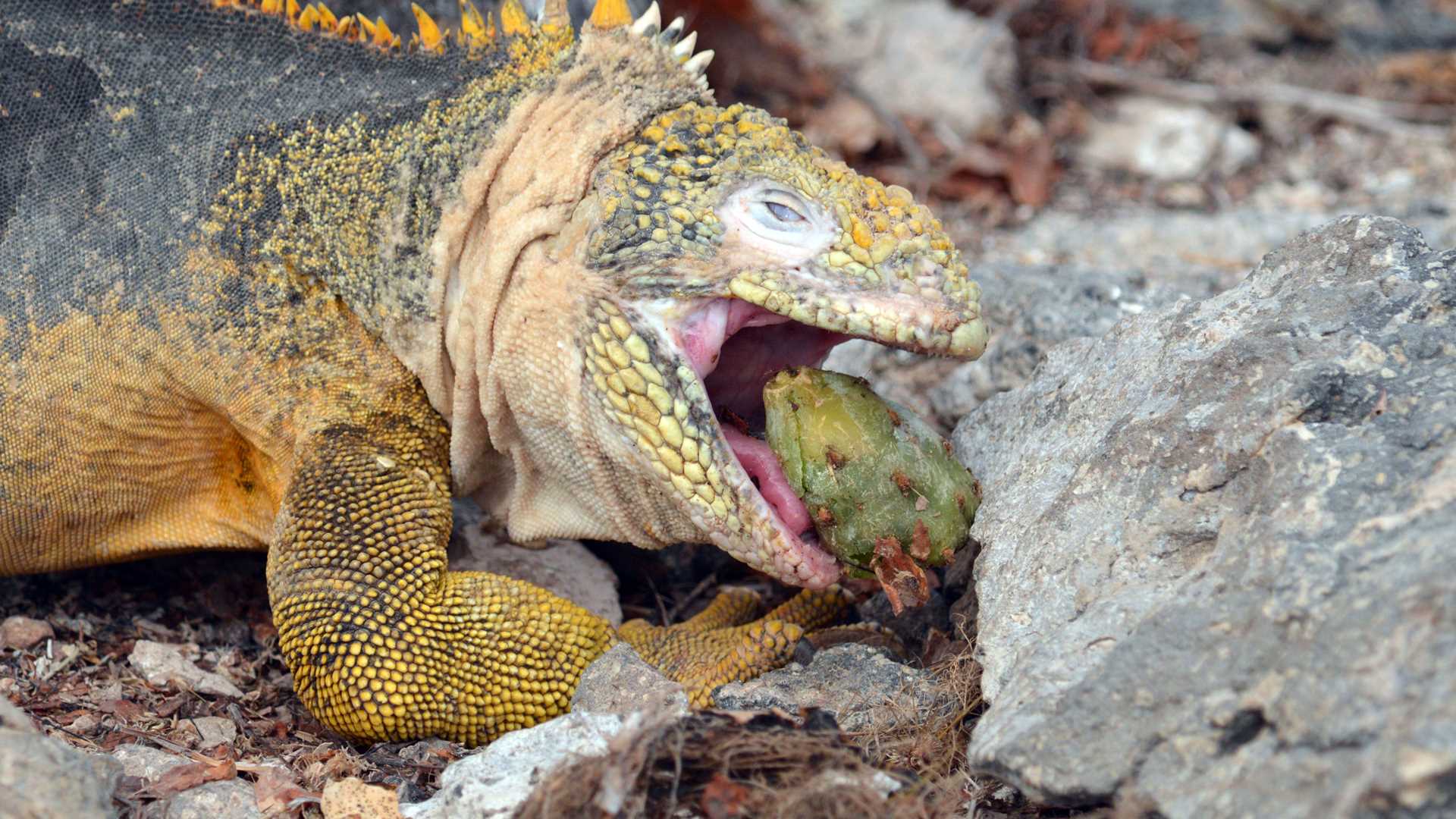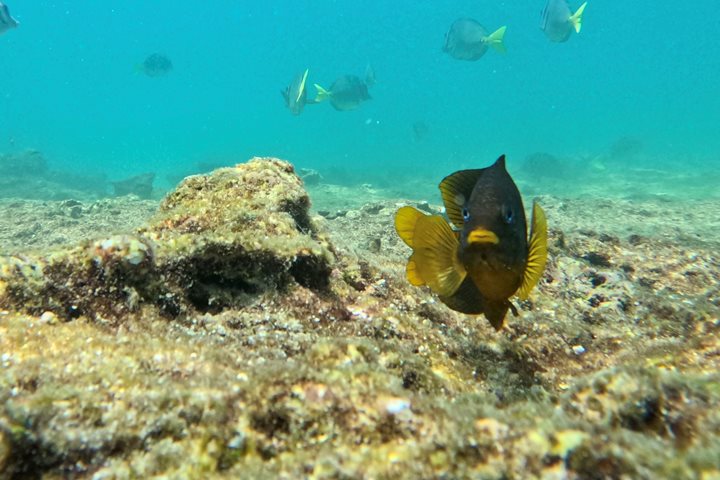Located in the center of the archipelago, Santa Fe and South Plaza Islands are unique due to their incredible natural history. The islands are home to two species of land iguanas that are endemic to the Galapagos: the yellow iguana (conolophus subcristatus) and the pale iguana (conolophus pallidus). Today was a day dedicated to the dragons of the Galapagos, as we visited the habitat of these incredible creatures.
After breakfast, we boarded Zodiacs and headed to South Plaza, a small island located northwest of Santa Cruz. Just before landing, playful sea lions swam nearby as if inviting us to join them for a day that was going to be spectacular. Very close to them, a male sea lion barked as he patrolled the coast, marking his territory and preventing other males from approaching the area. Walking inland, we came across land iguanas. Some fed on cactus fruits and others came out of their burrows after a cold and windy night. Along the cliffs, we spotted several red-billed tropicbirds, Nazca boobies, swallow-tailed gulls, shearwaters, and storm petrels. On the way back to the landing site, we found some land iguana nesting sites. Along the coast, we were surprised to see the remains of some seabirds (probably Galapagos storm petrels) that were likely hunted and eaten by a short-eared owl just hours ago.
After a short navigation in the afternoon, National Geographic Islander II arrived at Santa Fe Island. At 2:30 p.m., we began our activities within the calm of the bay. A long time ago, this bay was the caldera of a volcano, which is now extinct. Some of our guests preferred snorkeling, while others tried kayaking. We observed many whitetip sharks resting on the sandy bottom, sea turtles, eagle rays, and, of course, the curious sea lions. On the rocks, a Galapagos hawk tried to catch a marine iguana. Blue-footed boobies flew over the area, looking for food.
At 4:30 p.m., we started our last activity on Santa Fe Island. The landing beach was completely full of sea lions. We observed many females feeding their babies. Walking inland, the landscape changed dramatically. The landscape looked barren, and trees such as Palo Santo and muyuyu looked completely dry, typical for this time. Near the end of the trail, we found Santa Fe land iguanas. Unlike the land iguana we found at Plaza Sur, this iguana looked paler but similar in size. The iguanas were completely inactive due to temperatures that decreased considerably when a soft rain started. This weather and lack of water greatly affect the behavior of land iguanas, leaving them to find water inside succulent plants, especially cacti and Sesuvium. At 6:00 p.m., we boarded Zodiacs back to National Geographic Islander II. We were cold but happy after an incredible day in this natural paradise called Galapagos.







